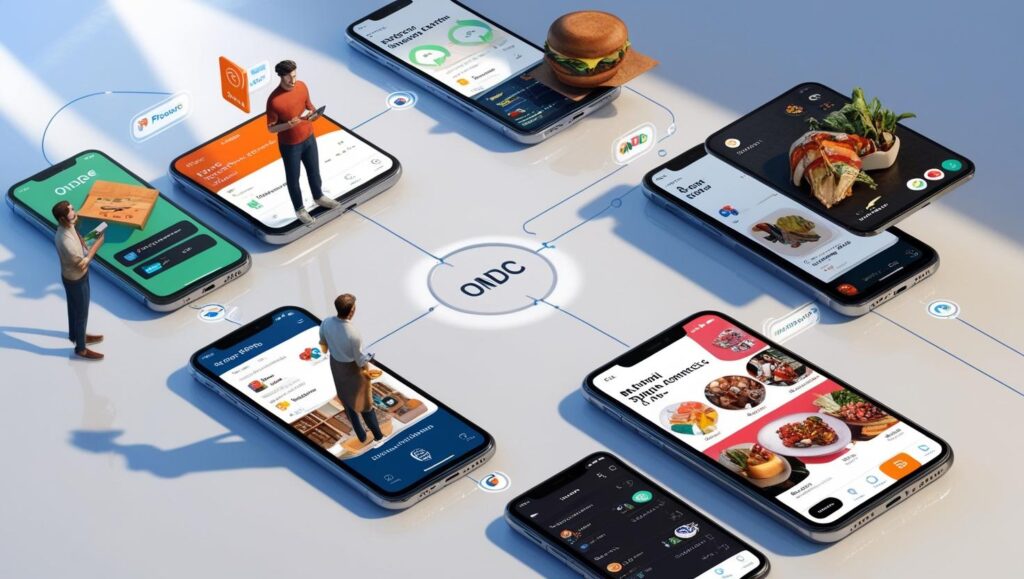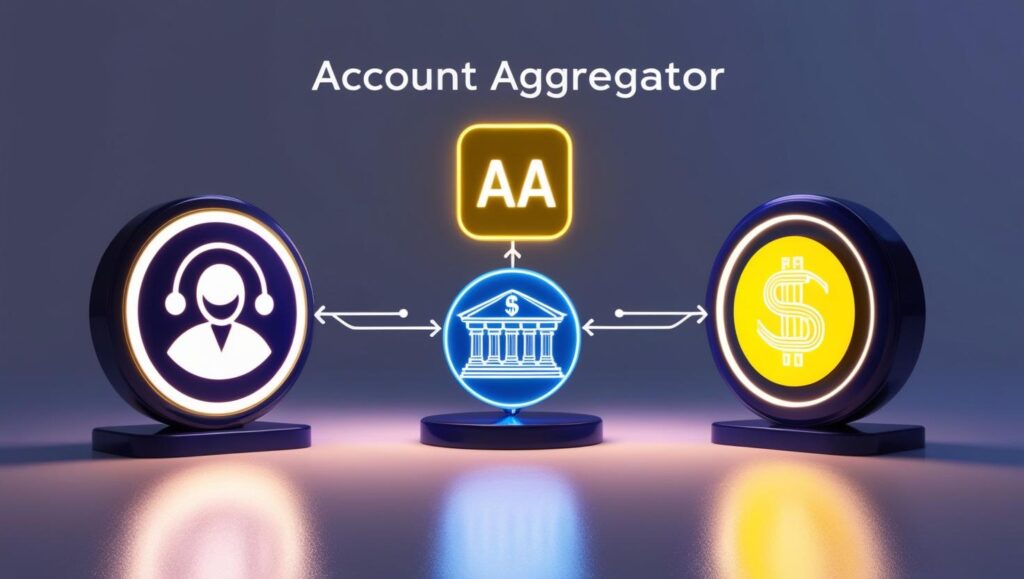We all know how UPI (Unified Payments Interface) completely changed the game for payments here in India. Sending money became as easy as sending a message! But UPI was just the beginning of India’s ambitious journey in building Digital Public Infrastructure (DPI). Now, as we stand in April 2025, two more revolutionary pieces of this puzzle are rapidly gaining momentum and reshaping how we shop online and manage our finances: ONDC and Account Aggregators (AA).
If you haven’t encountered them directly yet, you likely will soon. Let’s break down what these are and why they matter for everyone – from small shop owners in Chennai to online shoppers across the country.
ONDC: Unbundling E-commerce, Like UPI Did for Payments
Think about online shopping today. You typically go to a specific platform like Amazon or Flipkart. ONDC, or the Open Network for Digital Commerce, aims to change that fundamentally.
- What it is (Simply): ONDC isn’t another shopping app. It’s an open network, a set of rules or protocols backed by the government, designed to connect buyers, sellers, and logistics providers seamlessly, regardless of which app they use. The goal? To break down the “walled gardens” of current large e-commerce platforms and create a level playing field.
- How it Works: Imagine you’re using your favorite payment app (say, Paytm or PhonePe, acting as an ONDC ‘buyer app’). Through ONDC, you could browse and order biryani not just from large chains, but directly from your favourite local restaurant using its own billing software (acting as an ‘seller app’ on ONDC). Similarly, you could buy handicrafts directly from an artisan in another state. The network connects everyone, standardizing things like cataloguing and order management.
- The Impact & Status (April 2025): ONDC aims to democratize e-commerce, giving millions of small businesses and local retailers across India (like the shops in T. Nagar or Mylapore!) access to a nationwide customer base without paying the high commissions charged by dominant platforms (ONDC charges are minimal). For consumers, it promises greater choice and potentially more competitive pricing. As of early 2025, ONDC is scaling up significantly. It’s processing crores of transactions monthly (reports suggest over 1.6 crore orders in March!), has lakhs of sellers onboard across categories like food, grocery, mobility, fashion, and is even starting to facilitate financial services like small loans. While adoption is growing fast, particularly in mobility, getting widespread traction in retail against established giants remains an ongoing effort.

Account Aggregators (AA): Putting You in Control of Your Financial Data
While ONDC tackles commerce, the Account Aggregator (AA) framework is set to revolutionize how we access and share financial information.
- What it is (Simply): Regulated by the RBI, AAs are like secure, data-blind “consent managers.” They are licensed companies that don’t see or store your financial data themselves. Their job is to securely facilitate the flow of your financial information from where it’s held (like your bank – a Financial Information Provider or FIP) to where you need it (like a lender or wealth manager – a Financial Information User or FIU), only with your explicit permission.
- How it Works: Applying for a loan traditionally meant gathering and submitting piles of bank statements. With AA, you simply use an AA app (often integrated within your banking or fintech app) to grant specific, time-limited consent for the lender (FIU) to digitally request and receive, say, your last 6 months of bank transactions directly from your bank (FIP). You see exactly what data is being requested, why, and for how long, and you approve or deny it.
- The Impact & Status (April 2025): The AA framework is already making huge waves. Reports indicate it facilitated loan disbursements worth over ₹460 billion in the first half of FY25 alone! Lenders get real-time, verified data, enabling faster, more accurate credit decisions, potentially opening up credit access for those with thin credit files. Beyond lending (which is still the dominant use case), AAs are increasingly used for personal finance management (PFM) apps to give you a single view of all your accounts, and wealth management platforms for easier onboarding and portfolio reviews. Millions of accounts are linked, consent requests are climbing rapidly each month, and the RBI is establishing regulatory bodies (SROs), signaling the framework’s growing maturity and importance. It’s being called the potential “UPI of Data.”

The Bigger Picture: India Stack Continues to Build
Both ONDC and AA are vital parts of the larger India Stack vision – using open, interoperable Digital Public Infrastructure to empower citizens, boost financial inclusion, and drive innovation. They build directly on the foundations laid by Aadhaar and UPI.
What Does This Mean for You?
- For Individuals: Expect more choices and potentially better deals when shopping online as ONDC grows. Experience significantly faster loan applications, easier ways to track all your finances in one place, and more control over who sees your financial data, thanks to AA. Less running around for documents!
- For Businesses (especially SMEs): ONDC offers a powerful new channel to reach customers across India with lower costs. AA provides lenders, fintechs, and advisors with a streamlined, secure way to access consented customer data, enabling better services and risk assessment.
Challenges Remain, But the Direction is Clear
Of course, building these ecosystems takes time. Driving widespread adoption among millions of small sellers for ONDC, ensuring users understand and trust the AA framework, maintaining robust security and privacy, and ensuring a smooth user experience across different apps are ongoing challenges.
However, the trajectory in April 2025 is clear. ONDC and Account Aggregators are not just concepts; they are actively functioning, rapidly scaling digital infrastructures poised to fundamentally change India’s e-commerce and financial services landscape, much like UPI did before them. Keep an eye out – you’ll be using them more and more.
